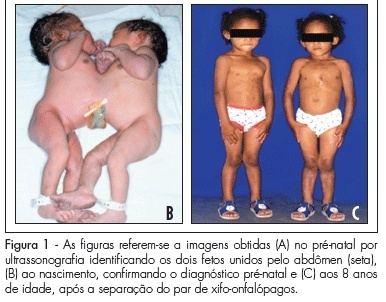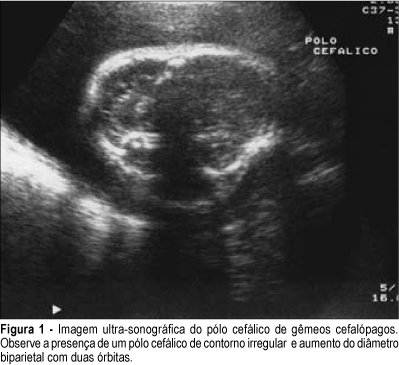Summary
Revista Brasileira de Ginecologia e Obstetrícia. 2010;32(2):61-65
DOI 10.1590/S0100-72032010000200002
PURPOSE: to analyze the occurrence of conjoined twins at a tertiary perinatology reference university hospital over a period of 25 years (January 1982 to January 2007) and to describe the successful separation of one of the pairs. METHODS: we consulted retrospectively the database of the University Hospital of the Medical School of Ribeirão Preto, University of São Paulo, Brazil, in order to determine the number of pairs of conjoined twins, their frequency, classification, gender, type of pregnancy resolution, attempted surgical separation, prenatal diagnosis and survival. RESULTS: we detected 14 pairs of conjoined twins (1/22,284 live births and 1/90 pairs of twin live births) born during this period (six males, seven females and one of indeterminate sex). The prenatal diagnosis was performed in all twins and all births were accomplished by cesarean section. The separation was possible in only one pair, which survives in excellent health conditions after eight years. Of the remaining 13, ten died on the day of birth and three survived only a few months (less than one year). CONCLUSION: Although our study revealed an abnormally high number of conjoined twins, this is a rare phenomenon, with a poor perinatal prognosis depending on the organs shared by the twins and associated malformations, especially those related to the fetal heart. Due to the poor prognosis of these pairs and to the maternal reproductive impairment caused by the need to perform body cesareans, we suggest that, based on these numbers, early interruption of these pregnancies be legally granted, as in the case of other diseases incompatible with fetal survival outside the uterus. Thus, the confirmation of a diagnosis of conjoined twins and the resolution of pregnancy should be performed at a tertiary obstetric and perinatal care center, and an authorization for the interruption of pregnancy should be obtained by judicial means.

Summary
Revista Brasileira de Ginecologia e Obstetrícia. 2006;28(7):416-423
DOI 10.1590/S0100-72032006000700007
Conjoined twins have a rare prevalence and special curiosity among physicians and the general population. The reported frequency varies from 1:50,000 to 1:200,000 pregnancies. Its early diagnosis becomes very important when we think about pregnancy management, method of delivery and neonatal care. We describe two cases of conjoined twins diagnosed by ultrasound and magnetic resonance during prenatal care with the aim to better studying the fetus anatomy. The first conjoined twins were cephalopagus sharing head, thorax and abdominal wall and with two pelvis and four arms and four legs. The second were thoracopagus, united by thorax and part of abdomen. Magnetic resonance imaging contribution was not important to diagnose conjoined twins. However, it was useful to describe the shared organs, contributing to define fetal outcome.
